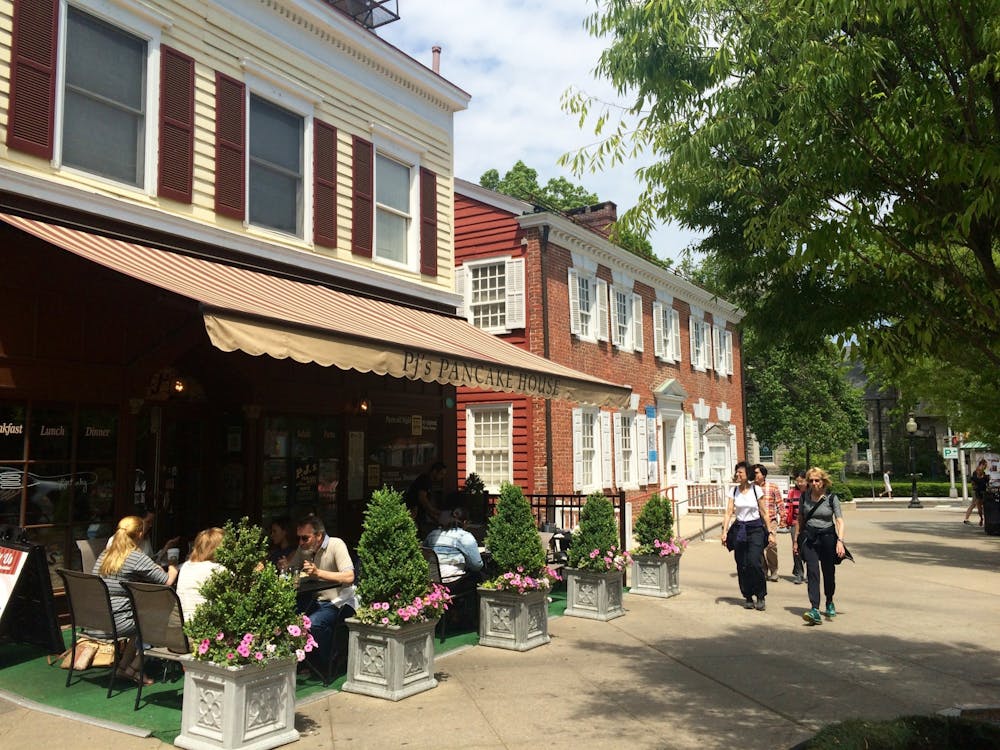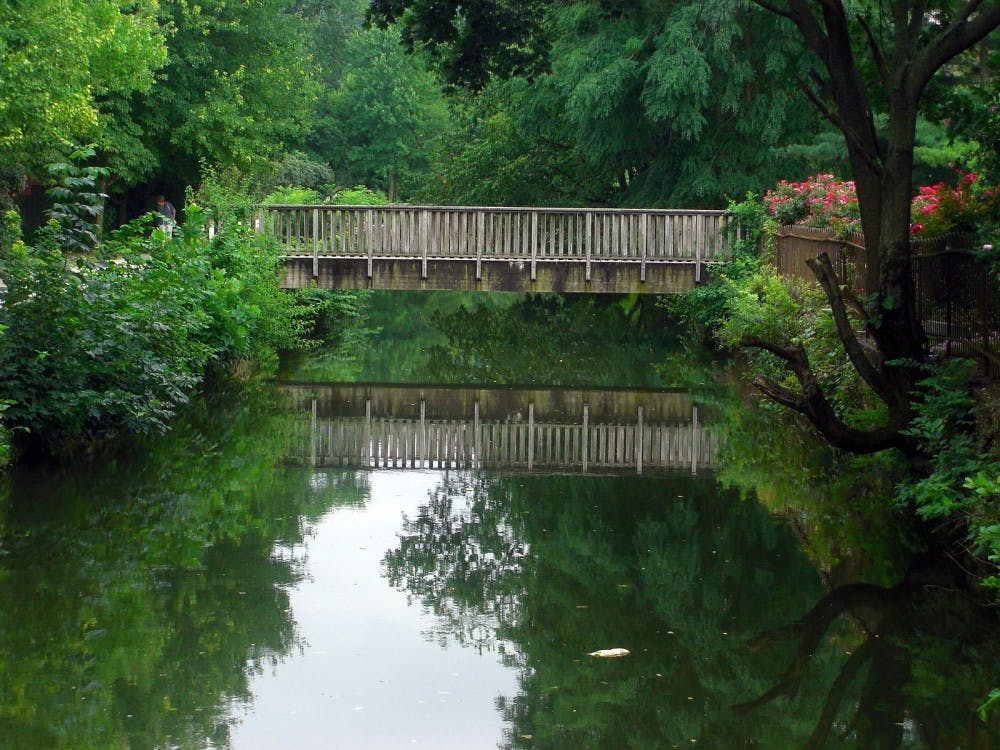I have found the concept of form and shape separate from meaning to be the most compelling," photographer Lauren Elachi '07 writes of her art. Exploring form, color and space for their own sake without assigning meaning is the unifying premise between the thesis exhibits of Elachi and Janice Dru '07, currently on display in the Lucas Gallery at 185 Nassau St. Beyond this thematic connection, each exhibit offers a radically different experience to the viewer. Entering the gallery, the observer studies a uniform arrangement of crisp, untitled, black and white photographs along an austere white wall. Passing through the door into the next exhibit, the observer is immediately surrounded by whimsical lines, synthetic sculptures and a multitude of canvases radiating vibrant color. Order meets chaos in these two thoughtful and contemporary artistic displays.
Elachi's greatest overall strength as a photographer is her keen sense of framing. The visual appeal of her photographs is consistently amplified by her sense of perspective and boundaries. Elachi avoids using photography as a means of social commentary and instead chooses subjects solely on basis of their geometric and aesthetic interest.
"I find the spaces we create unwittingly, the patterns we pass every day without recognition," she says, "and show them in their original and organic aesthetic context." Lauren's photographs are of old buildings, fishing nets, chain link fences, hotel lobbies — not subjects which immediately suggest compelling pictures. Consequently, the success of her photographs relies heavily on the way they are framed.
One of my favorite photographs in her exhibit looks down a narrow, winding street. The street is entirely empty except for a man seen walking far ahead with his hand raised to the back of his head. The interaction between the diagonal lines of the buildings and the curved space of the narrow street between them makes a striking picture.
The ceramic mobile, the one deviation from black and white photography in the entire exhibit, does not seem to fit with the rest of Elachi's work. At first, it is not immediately apparent that it is part of her exhibit. Elachi explained that she included the ceramic piece because, like her photographs, it demonstrates a way of using form, shape and space in an unexpected way. While the piece was certainly unexpected, it did not resonate with me the way several of her photographs did, and I do not think it was an asset to the show.
"Expect the unexpected" is the phrase brought to mind by Dru's show. Unlike Elachi's, which sticks almost entirely to one art form, Dru's exhibit, aptly named "Ethereal Fragments," includes painting, video, found art and conceptual art. Because the show is constructed around disparity and incoherence, the combination of mediums proves compelling rather than distracting. Like Elachi, Dru avoids attaching objective meaning or explanation to her work. For her, each individual piece is "devoid of meaning" because the process is distinctly different from the final conclusion. Dru identifies movements such as Dadaism and Abstract Expressionism as influencing her style.
In such an eclectic exhibit, the single common feature in Dru's art is also her greatest strength: her use of rich, flaming colors. While Elachi's skill lies in her sense of framing, Dru's ability to create such intense, dreamlike colors and understanding of how to use them according to every medium she presents is the key to the success of this exhibit.
My favorite piece in "Ethereal Fragments" is an oil painting on canvas entitled "Dream in a Dream." This delightfully surreal painting experiments with layering different levels of consciousness and reality. Near the lower edge of the frame are a man and a woman sleeping in bed. Above them is a purple frame containing another scene of the same couple kissing with a bowl of popcorn sitting next to them and a TV on in the background. A third dimension is added by the scene on the TV, which shows a hallway lined with student lockers; one of these lockers is open and reveals a student stuck inside. When I asked Dru about this painting, she described it as a narrative influenced, at least in part, by her personal life. Dru was inspired to depict a husband and wife by her own experience as one of the few married students in her class.

As mentioned before, parts of this exhibit are quite abstract, providing very liberal definitions of art. For instance, one sculpture entitled "Synthetic Soup" involved randomly dropping beads and sequins on a Vaseline-coated plastic box. Another piece, "Unfinished Business," features a bulletin board covered in sticky notes attached with pushpins. Those who believe in the artistic vision that anything in daily life can be conceived of as art will likely find Dru's work quite interesting, while others who prefer more classical, technical definitions of art may raise their eyebrows skeptically.
The presentation of these two exhibits together make for an unusual journey through radically different art forms. They will likely challenge your conceptions of the meaning of art as well as your definitions of what constitutes art.
Senior Thesis Show
185 Nassau, Lucas Gallery
Pros: Exciting; multidimensional; thought-provoking
Cons Inconsistent; unpolished








